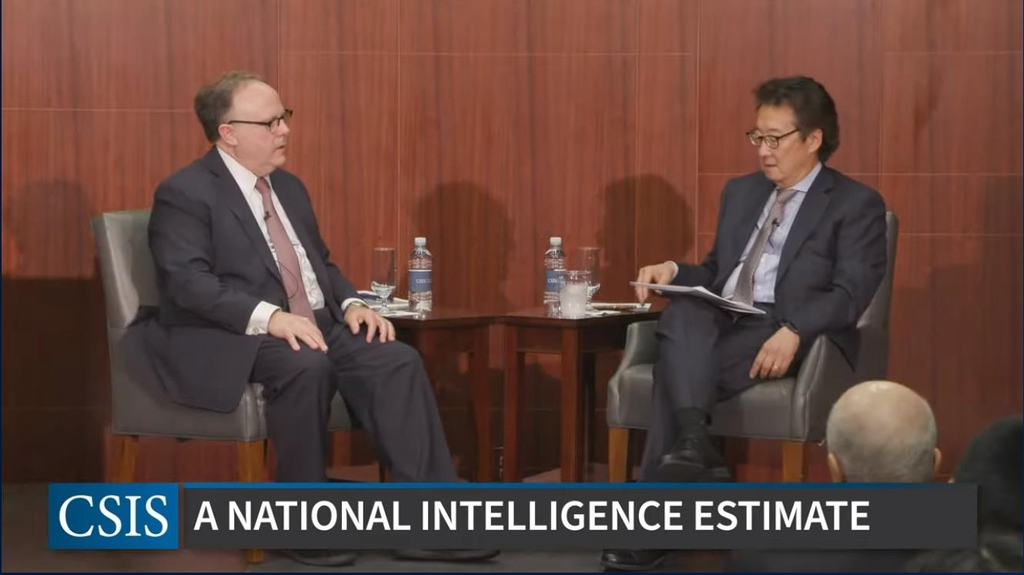N. Korea most likely to use nuclear weapons as means of coercion: US intelligence report
By YonhapPublished : June 23, 2023 - 09:31

North Korea will likely use its nuclear weapons to coerce political concessions from South Korea and its allies, a US intelligence report said Thursday.
The Office of the Director of National Intelligence noted that Pyongyang may also employ non-nuclear, non-lethal attacks to advance its goals in the future, believing that its nuclear weapons will deter counteroffensives.
"We assess that through 2030, Kim Jong-un most likely will continue to pursue a strategy of coercion, potentially including non-nuclear lethal attacks, aimed at advancing the North's goals of intimidating its neighbors, extracting concessions, and bolstering the regime's military credentials domestically," said the report, titled "National Intelligence Estimate" on North Korea.
The report, dated January 2023, was released Thursday as part of the DNI's transparency efforts, according to Sydney Seiler, National Intelligence Officer for North Korea at the National Intelligence Council.
"Kim, who has relied largely on non-lethal coercive measures throughout his rule, probably will employ targeted diplomatic and covert actions and may use limited military force to raise tensions as a means to press key foreign governments into adopting positions favorable to his objectives, confident that his growing nuclear capabilities will deter any unacceptable retaliation or consequence," the report added.
North Korea has launched nearly 100 ballistic missiles since the start of last year, firing an unprecedented 69 ballistic missiles in 2022 that marked the new annual record of ballistic missiles fired.
Seiler noted the US intelligence community assessed three different scenarios where the North Korean leader may decide to use nuclear weapons for coercive, offensive or defensive purposes.
"The IC assesses that this offensive strategy seeking to seize territory, achieve political dominance over the peninsula and achieve these objectives that would include the use of nuclear weapons will be much less likely, much less likely than the strategy of coercion," he said while speaking at a seminar hosted by the Center for Strategic and International Studies, a Washington-based think tank.
"Defensive like the offense was seen to be very unlikely, compared to the coercive scenario," he added.
Seiler noted the main driver for North Korea's coercive strategy is its confidence that coercion will yield political, economic and military benefits while it also believes that the resulting escalation of tension will be "manageable."
"So you look at provocations over the history of North Korea. one thing that we see often is that these provocations tend not to escalate out of control like one normally would think," he told the meeting.
"We might even see periods of lessening of tensions on the peninsula. But again, we felt very unlikely that Kim would forego the very coercive options that his nuclear arsenal has provided," added Seiler.
On whether Pyongyang may give up its nuclear weapons entirely, the US intelligence official argued that it is unlikely to do so at least until it has achieved its goals.
"What I haven't mentioned one of the drivers here is incredible cost, incredible investment. Will Kim be looking at a return on investment? Why is he spending the amount of money that he is spending on missiles and nuclear weapons or North Korea doing this over the course of three decades in the absence of an imminent existential threat?" said Seiler.
"The NIE considered three scenarios of how Pyongyang could perceive value and the purpose of a growing nuclear arsenal through 2030. We assess that the coercive path is probably the most likely going forward, that Kim will most likely employ a variety of coercive methods and threats of aggression to see progress toward achieving his national security policies," he added. (Yonhap)




![[Music in drama] Rekindle a love that slipped through your fingers](http://res.heraldm.com/phpwas/restmb_idxmake.php?idx=644&simg=/content/image/2024/05/01/20240501050484_0.jpg&u=20240501151646)

![[New faces of Assembly] Architect behind ‘audacious initiative’ believes in denuclearized North Korea](http://res.heraldm.com/phpwas/restmb_idxmake.php?idx=644&simg=/content/image/2024/05/01/20240501050627_0.jpg&u=20240502093000)




![[KH Explains] Will alternative trading platform shake up Korean stock market?](http://res.heraldm.com/phpwas/restmb_idxmake.php?idx=644&simg=/content/image/2024/05/01/20240501050557_0.jpg&u=20240501161906)







![[Today’s K-pop] Stray Kids go gold in US with ‘Maniac’](http://res.heraldm.com/phpwas/restmb_idxmake.php?idx=642&simg=/content/image/2024/05/02/20240502050771_0.jpg&u=)